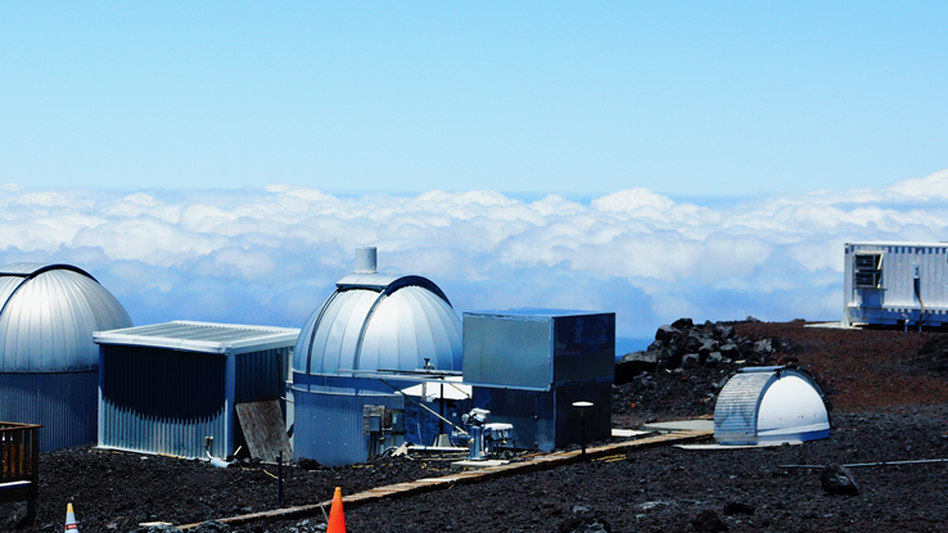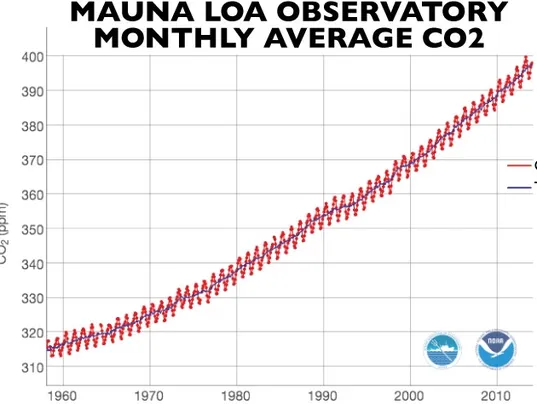Mauna Loa Laboratory Faces Shutdown
The Trump administration’s budget proposal has set its sights on the Mauna Loa Atmospheric Baseline Observatory, a facility that has been paramount in documenting human-caused climate change since 1958. This laboratory is not just a scientific outpost; it represents the backbone of climate data collection, with the iconic Keeling Curve illustrating the alarming rise in atmospheric carbon dioxide (CO2) levels. The proposed budget cuts threaten not only Mauna Loa but also the entire network of climate monitoring labs across the United States.
Keeling Curve"s Dire Message
The Keeling Curve, named after scientist Charles David Keeling, has consistently shown a dramatic upward trend in CO2 levels, rising from 313 parts per million (ppm) in 1958 to a staggering 430 ppm in 2024. This year marks a grim milestone as monthly average CO2 levels at Mauna Loa have surpassed 430 ppm for the first time, according to NOAA. This data is crucial for understanding climate change"s trajectory, which has already led to rising sea levels, extreme weather patterns, and catastrophic impacts on global food systems.

Carbon Dioxide, Which Drives Climate Change, Reaches Highest Level In 4 ...
Political Agenda Targets Climate Research
The proposed budget, outlined in a document submitted to Congress, indicates a broader agenda to eliminate climate-related research at NOAA. As detailed in the conservative blueprint Project 2025, this plan seeks to redirect NOAA"s focus away from critical climate science towards operational weather forecasting. The implications of this shift are dire, particularly for marginalized communities that disproportionately bear the brunt of climate impacts.
Consequences for Environmental Justice
The dismantling of climate research at Mauna Loa and other facilities poses a significant threat to environmental justice. Communities of color and low-income populations are often the first and hardest hit by climate change, facing increased flooding, heat waves, and food insecurity. The data collected at Mauna Loa informs policies that could mitigate these impacts, but without ongoing research, these vulnerable communities are left to navigate an increasingly hostile environment without the tools and knowledge they need to advocate for their rights.

Key climate-change measurement imperiled
Future of Climate Monitoring at Risk
If the Mauna Loa laboratory shuts down, there are concerns about the continuity of the CO2 record. The Scripps Institution of Oceanography, which currently oversees data collection, may seek alternative funding sources, but this could disrupt decades of valuable data, as noted by The Keeling Curve website. Moving the instruments elsewhere in Hawaii would risk introducing inconsistencies into our understanding of atmospheric changes. The historical significance of this data collection cannot be understated; it is foundational for any climate action plan.
As we witness the erosion of critical climate science under the Trump administration, it is imperative that we amplify the voices of scientists and communities advocating for climate justice. The fight against climate change is not just an environmental issue; it is a social justice issue that demands immediate action.


![[Video] Canada PM Carney says AI data centres must be carbon neutral](/_next/image?url=%2Fapi%2Fimage%2Fthumbnails%2Fthumbnail-1763826648718-lujuba-thumbnail.jpg&w=3840&q=75)
![[Video] Fire at COP30 Climate Summit in Brazil](/_next/image?url=%2Fapi%2Fimage%2Fthumbnails%2Fthumbnail-1763671284663-2idg9-thumbnail.jpg&w=3840&q=75)
![[Video] Fire erupts at COP30 climate summit in Belém, Brazil, no injuries reported](/_next/image?url=%2Fapi%2Fimage%2Fthumbnails%2Fthumbnail-1763661056988-msvhjo-thumbnail.jpg&w=3840&q=75)

![[Video] Left-wing radicals attack AfD politicians and journalists in Giessen](/_next/image?url=%2Fapi%2Fimage%2Fthumbnails%2Fthumbnail-1764438663474-e7iix9-thumbnail.jpg&w=3840&q=75)

